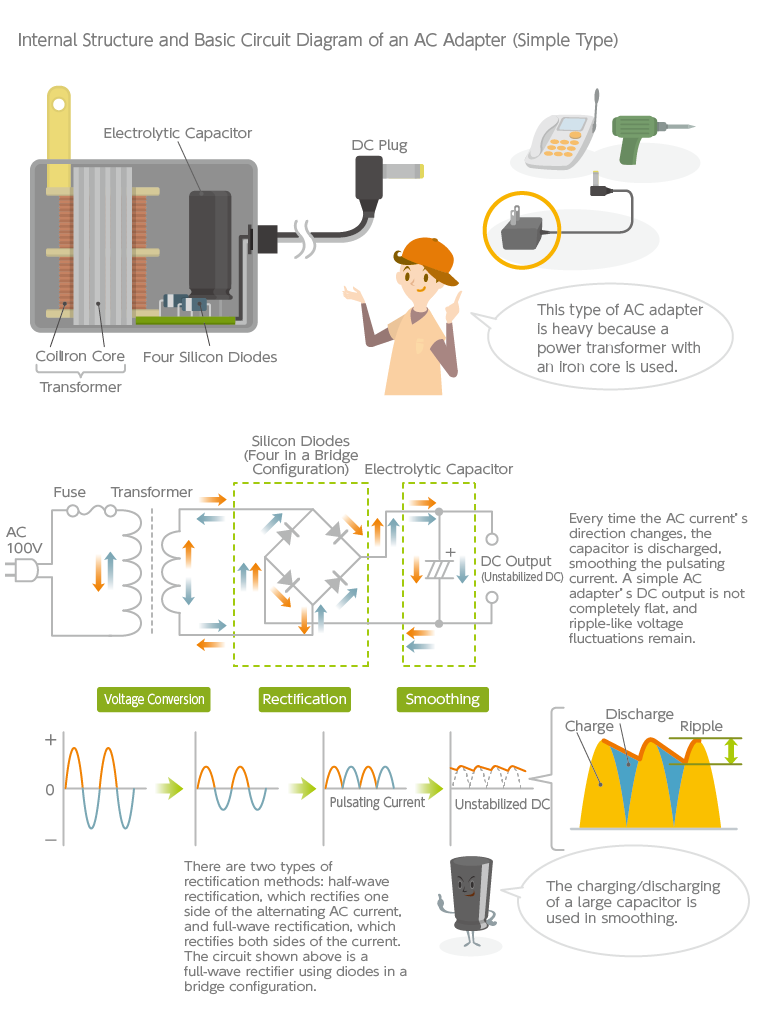Intro to EMC Topics
Summary—Solve Intractable Noise Problems with Positive Thinking
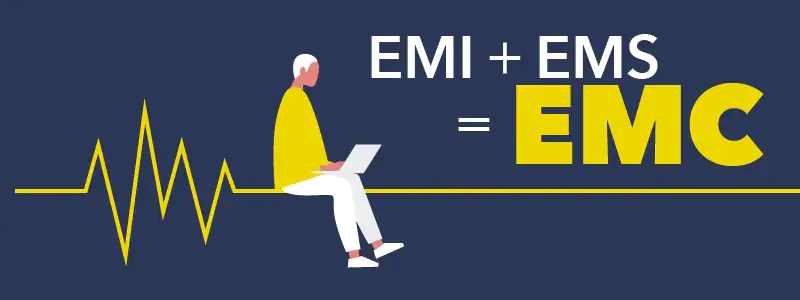
Advances in electronics and noise problems are two sides of the same coin. We can never eliminate noise from our surroundings entirely—but it would be a misconception to think that noise is hindering the development of electronics. Rather, clues for new technologies and products are often hidden in noise issues. Think creatively when working on noise.
Noise suppression has been a driving force behind the progress of electronics
“Review the old and know the new” is a Confucian proverb. In any era, the past is a guide for the future. As we wrap up this series, let’s look back at the history of noise problems.
The noise problem emerged in the early 20th century, when wireless communication first came into practical use. In the 1920s, radio waves of various frequencies began to fly around, creating interference and reception problems—thereby making it necessary to organize radio traffic. Initially, the focus was on suppressing RFI (radio frequency interference), which was interfering with radio broadcasting and maritime navigation. Meanwhile, wireless communication technologies continued to develop rapidly, with the upper limits of frequency allocation expanding from the MHz range to eventually the GHz range. The microelectronics revolution swept the world from the 1960s onward, and noise problems grew beyond the realm of communication interference and developed into the idea of preventing electronic devices from being harmed by noise. The idea of EMI (electromagnetic interference) was born, which evolved into the concept of EMC (electromagnetic compatibility). Office appliances, factory automation and mobile electronic devices all came to being while incorporating EMC measures along the way. History shows that noise problems have actually been a driving force behind the progress of electronics.
Approach noise problems systematically
It is said that 90% of a problem is practically solved once the cause is identified. Like modern medicine—where CAT scans, blood tests and other advanced tools are utilized to diagnose diseases—the causes of noise need to be investigated using a multifaceted and systematic approach. Begin with measurement and analytic instruments to examine the frequency spectrum and waveforms of the noise.
Noise measurement and analysis equipment have made rapid advances in recent years. Noise is invisible to the naked eye, but can now be visualized using computers. From near-field analysis systems that can examine the noise distribution on high-density circuit boards at the millimeter scale, to anechoic chambers capable of measuring noises generated by electrical and electronic equipment and even whole automobiles—highly advanced technologies have become available for the assessment of noise.
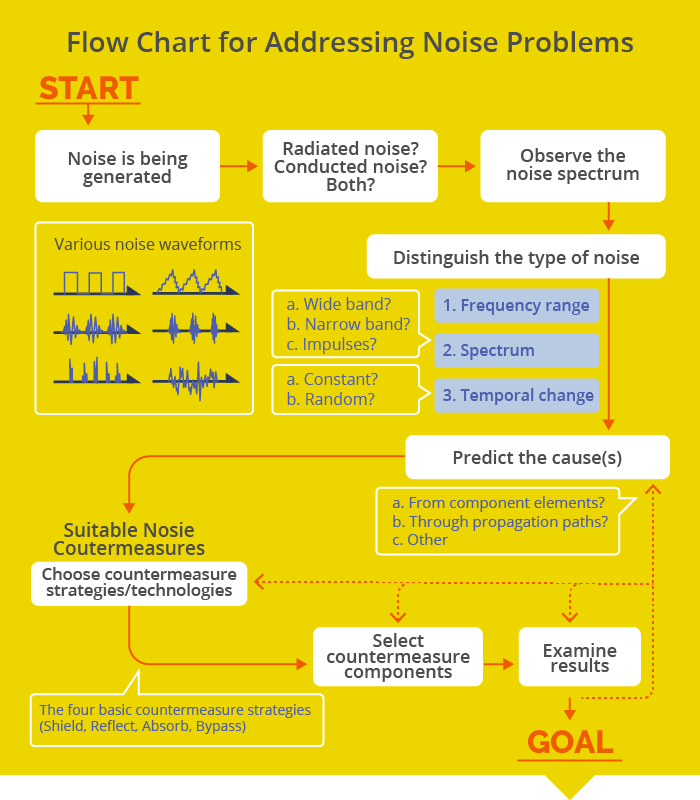
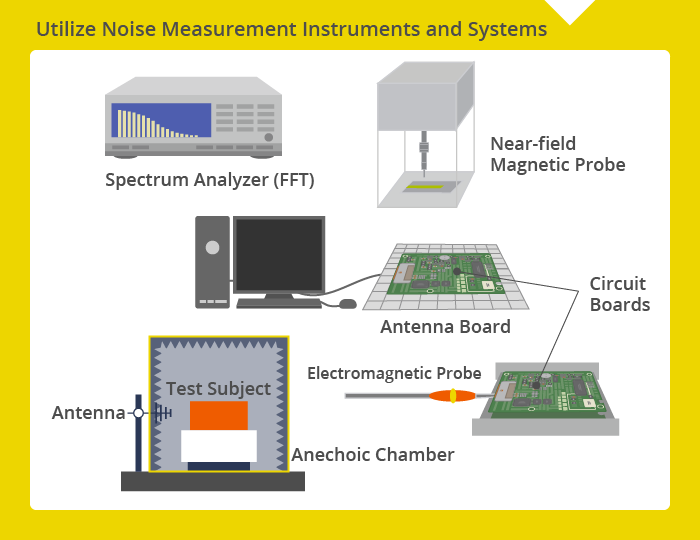
Begin applying basic noise countermeasures at the planning and design stages

Let radiated noise escape into a surface with stable electric potential (the frame, ground, etc.) by covering with metallic material. Alternatively, absorb noise with radio wave absorbers or electromagnetic shielding materials and convert into heat.
Countermeasure components: Metal plates, ferrite plates, radio wave absorbers, flexible shields, etc.

Conducted noise should first be reflected back to the source to prevent infiltration into circuitry as much as possible.
Countermeasure components: Inductors, LC filters, etc.

For noise infiltrated into circuitry, absorb and convert into heat.
Countermeasure components: Resistors, ferrite beads, etc.

Let conducted noise infiltrated into circuitry escape into a surface with stable electric potential (frame, ground, etc.)
Countermeasure components: capacitors, varistors, etc.
The world of noise is intriguing
As digital devices continue to handle higher frequencies, it is not uncommon for their signals to mutate into noise. Interface cables interconnecting devices may turn into antennas, worsening our electronic environment. This is why common mode filters have become indispensable for high-speed interfaces.
There is no panacea for noise. The best approach is to consider noise problems from the perspectives of the overall device and system, and use appropriate noise suppression components in the right places. An after-the-fact, symptomatic attempt at fixing problems using countermeasure components may not only be ineffective, but can even exacerbate noise.
While there is a wild variety of situations in which noise is generated, we have summarized some practical tips on implementing noise countermeasures in the following illustrations. We hope you find them helpful.
Noise is certainly a difficult problem. However, exploring its depths may engender new discoveries and inventions. We encourage you to approach noise problems with positive thinking.
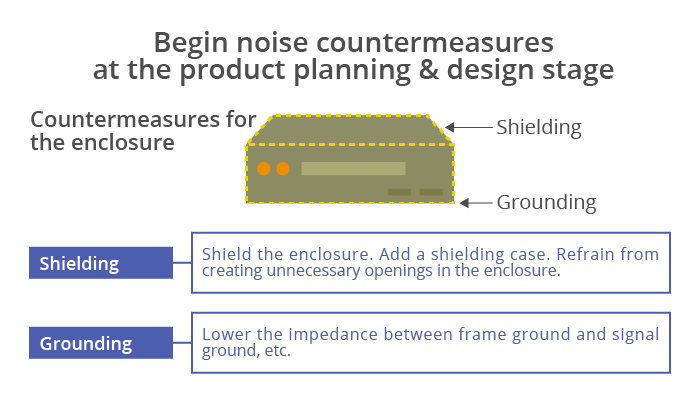
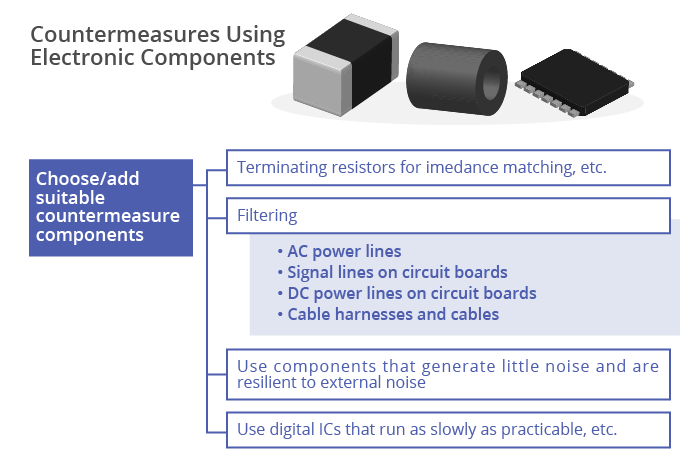
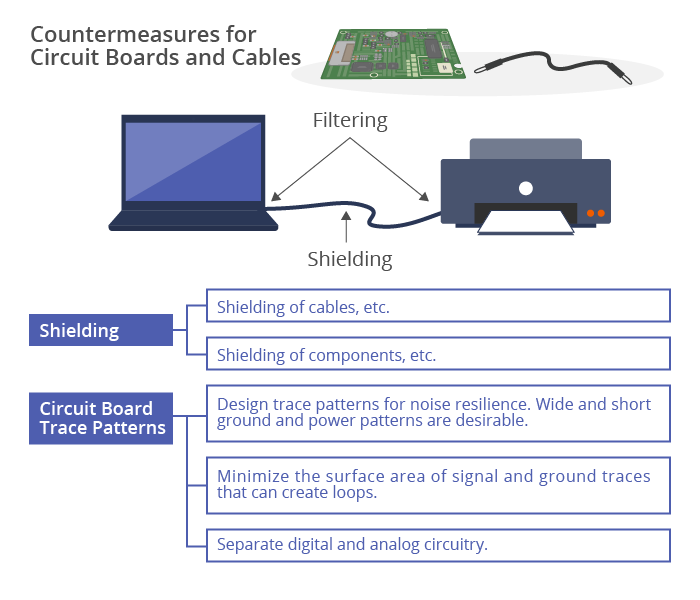
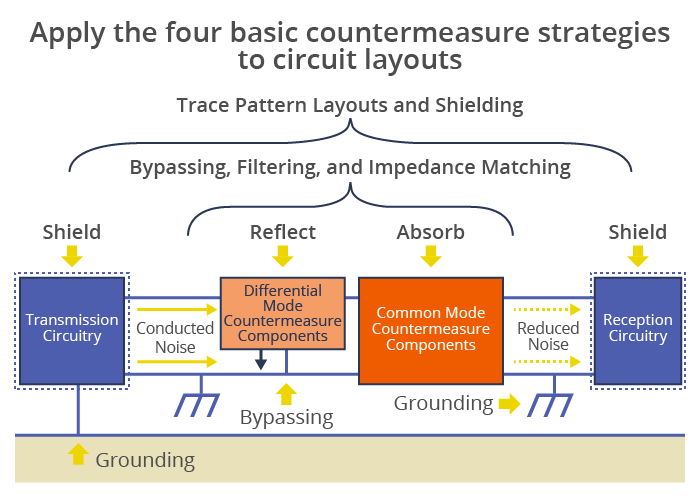
TDK is a comprehensive electronic components manufacturer leading the world in magnetic technology




